The pros and cons of different types of toilets
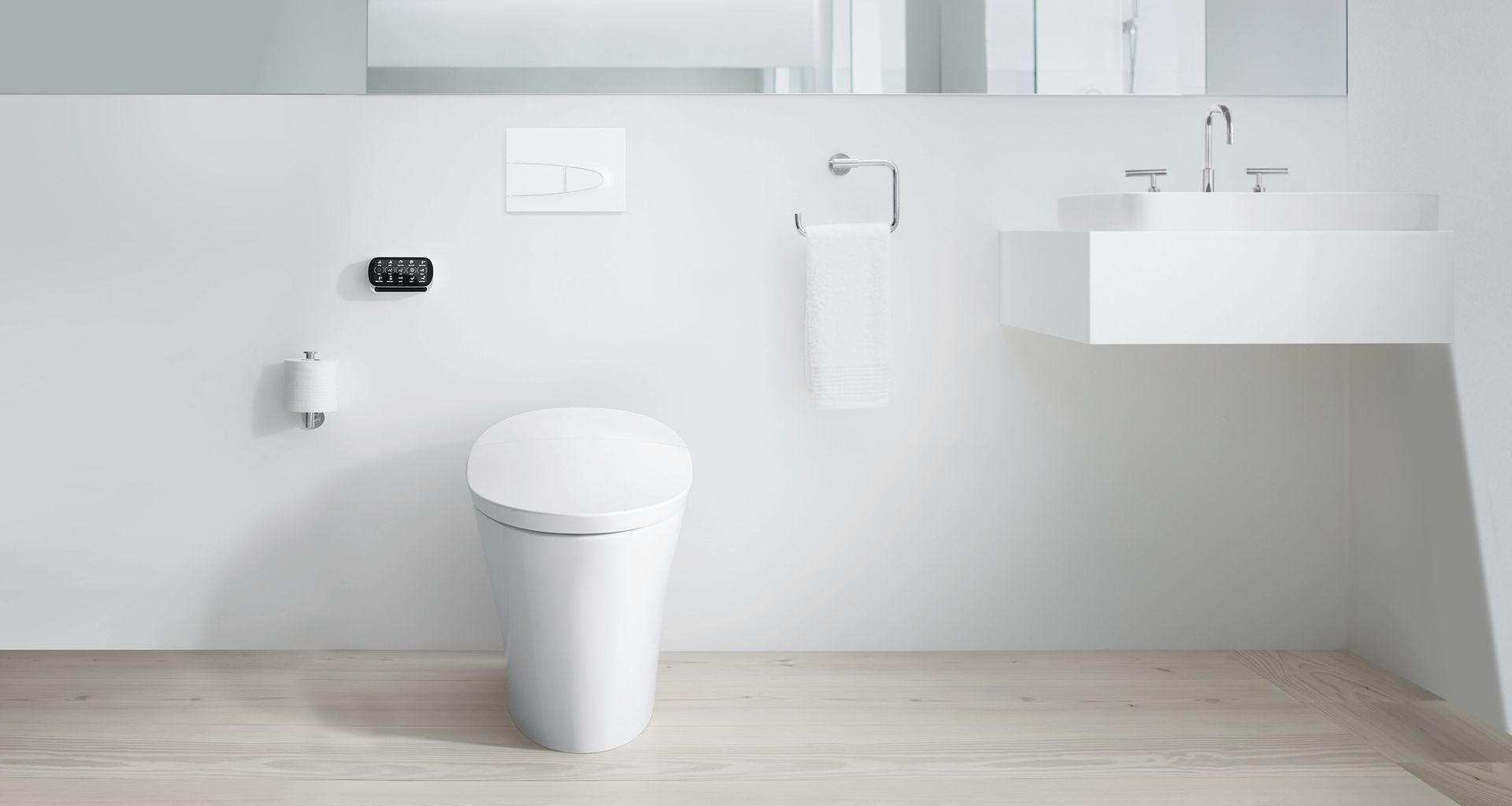
Choosing the right type of toilet is about selecting one that will work for the household and look great in your new bathroom. Knowing what the options are as well as their advantages and disadvantages will put you in the best position to pick the perfect toilet for you.
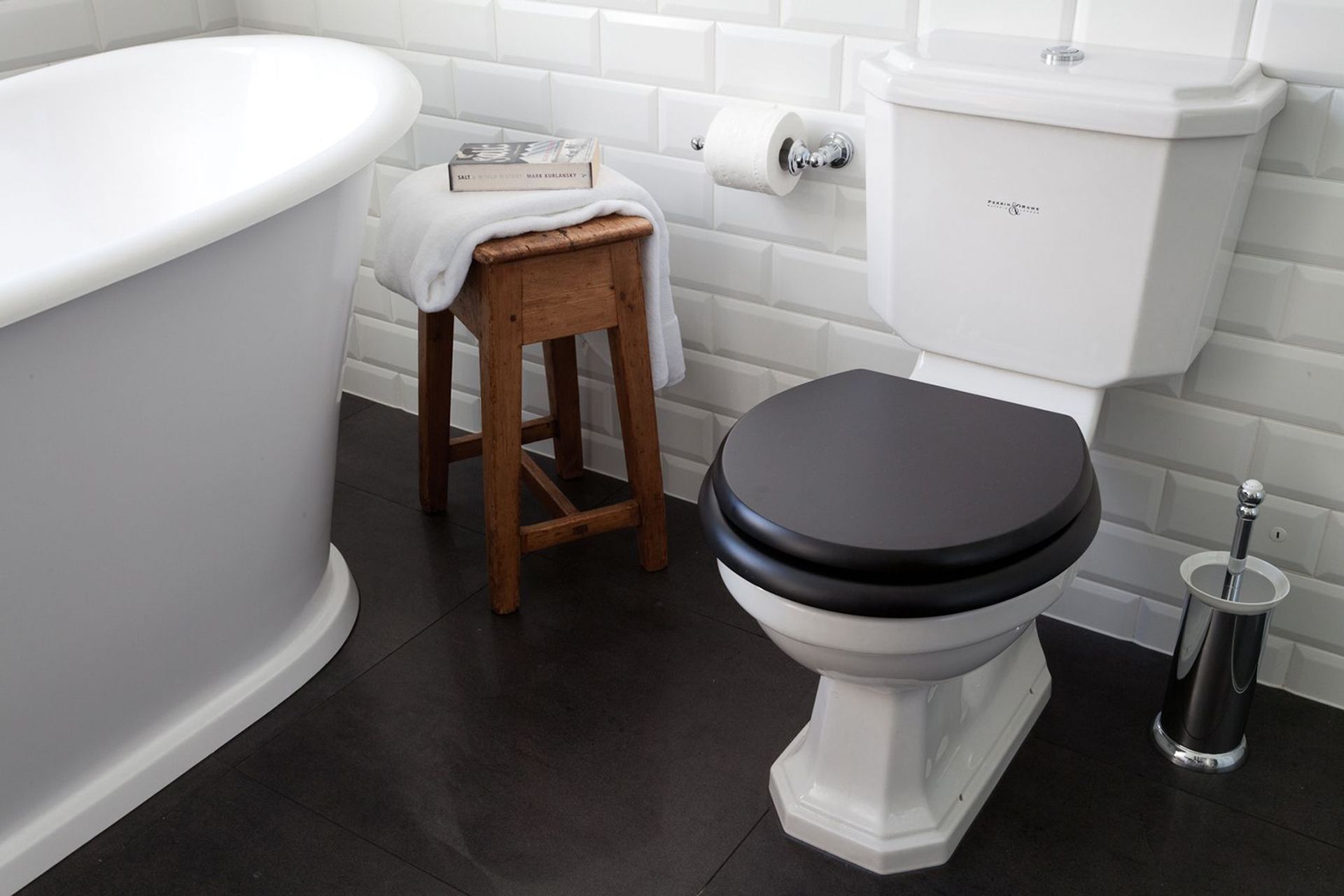
1. Two piece toilet
The two-piece toilet is the most prevalent and arguably the simplest type of toilet. It consists of a bowl, where waste is disposed of, and a tank, which stores water for flushing. These toilets come in two varieties: single flush, which uses one amount of water for all types of waste, and dual flush, which offers two flushing options depending on the type of waste, promoting water conservation.
Their adaptable design and easy maintenance make them particularly suitable for full-sized family bathrooms where comfort and practicality are paramount.
Pros:
Cost effective option: Many people choose two piece toilets as they are often cost effective. This doesn’t mean they can’t and don’t look stylish as you can find them in a wide range of designs.
Ease of installation: Installation is also straightforward as the two parts involved can be quickly connected. This makes it far easier to lift the toilet into position, especially in tight areas or through thin doorways. You can even assemble the toilet before installing it.
Repair friendly: Another advantage of the two piece toilet is that if one part breaks, you can replace the broken section with another without having to replace the entire toilet. This makes maintaining the toilet over a long period of time very easy and means that usually only minor repairs are required.
Cons:
Regular deep cleaning is needed: One drawback of two-piece toilets is their need for regular deep cleaning. The spaces between the two sections and connectors can easily accumulate dirt and grime, leading to a build-up that requires frequent and thorough cleaning to maintain hygiene and appearance.
Susceptibility to leaks: Another con associated with two-piece toilets is their vulnerability to leaks. If the area around the rubber gasket becomes damaged or compromised, it can lead to water leakage. Repairing or replacing the rubber gasket in such situations can be challenging, potentially causing inconvenience and additional maintenance efforts.
Complexity of repairs: When encountering issues like leaks or damage in two-piece toilets, repairs can sometimes be more complex compared to other toilet types. The need to disassemble and reassemble multiple parts during repairs can make the process more intricate and time-consuming, requiring careful attention to detail to ensure proper functioning.
2. Close coupled toilet
Close coupled toilets are a widely used type of toilet design. Distinct from the two-piece toilets, they feature a design where the toilet bowl and cistern are directly connected without any visible gap. This seamless connection not only provides a streamlined appearance but also conceals the flush pipe that links the bowl and the cistern, making it stylistically pleasing and easier to clean. Their compact and unified design makes them an excellent choice for smaller houses or apartments where space is at a premium.
Pros:
Easy installation: Like two-piece toilets, close coupled toilets are designed for quick and straightforward installation, saving both time and effort during the setup process.
User-friendly: The placement of the flush control on the back of the cistern is intuitive and accessible, enhancing the user's comfort and ease of use.
Cost-effective: Due to the design of close coupled toilets, there is usually no need for significant alterations to existing plumbing, which significantly reduces installation time and associated costs.
Cons:
Style limitations: Compared to other models, close coupled toilets may appear somewhat plain or lacking in stylistic distinction, potentially limiting their appeal for those seeking a more unique or sophisticated bathroom design.
Cleaning difficulties: The junction between the tank and the bowl in close coupled toilets can accumulate dirt over time and may prove difficult to clean effectively due to its often narrow and inaccessible nature.
Design variations: While some models succeed in blending the practical close coupled design with a sleek, modern aesthetic, this is not universally the case, potentially limiting the range of styles available within this category of toilets.
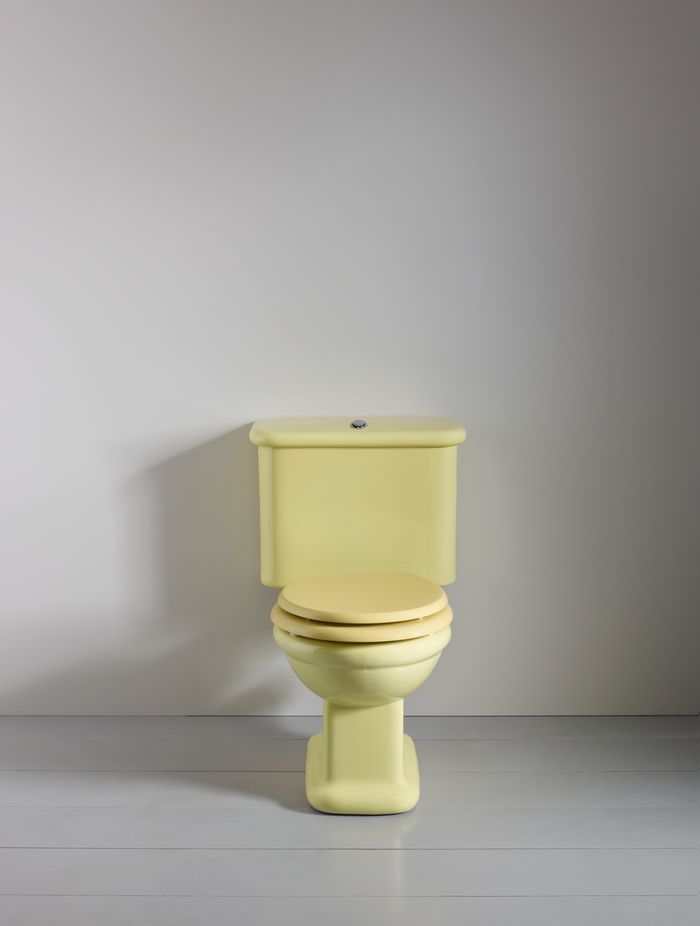
3. Wall hung toilet
This style of toilet is popular with modern designers, who like the floating appearance. Being very small, they occupy little space for a minimalist look. The bowl floats above the ground, attached to the wall with the cistern completely out of sight in the wall itself.
Pros:
Customisable height and accessibility: One of the major advantages of wall hung toilets is the ability to install the toilet bowl at any preferred height, enhancing accessibility for individuals with mobility issues or those who have difficulty sitting and standing.
Enhanced cleanliness: The floating design of the toilet bowl allows for easier cleaning underneath, promoting better hygiene and ease of maintenance.
Making the most of space: Wall hung toilets offer a sleek, minimalist aesthetic with the cistern concealed within the wall. This not only ensures quiet operation even during a full flush but also saves significant space, making them an ideal choice for smaller bathrooms. The Milady Wall Hung toilet exemplifies these attributes.
Cons:
Higher price point : Compared to other types of toilet wall hung toilets generally come at a higher price point, which can be a deterrent for budget-conscious consumers.
Complex installation: The requirement to install the cistern within the wall necessitates additional design work and planning, making the installation process more complex and time-consuming compared to more traditional toilet models.
Increased labour: The intricate installation process of wall hung toilets can result in increased labour costs, as it often requires professional expertise to ensure proper fitting and functionality.
4. Wall faced toilets
Wall-faced toilets, also known as back-to-wall toilets, are designed to be installed against the bathroom wall. This configuration conceals the pipework and provides a clean and streamlined look. The cistern can either be concealed within the wall or within a furniture unit, or it can be exposed as in close-coupled toilets.
They are particularly fitting for design-conscious homeowners who seek a modern, sleek look in their residences. These toilets also work well in upscale apartments or luxury homes, where high-end finishes and a touch of sophistication are required.
Pros:
Sleek design: The clean lines and concealed pipework give a neat and uncluttered look to the bathroom.
Easy to clean: The absence of exposed pipework makes cleaning easier.
Versatile installation: The cistern can be either concealed or exposed, allowing for a flexible installation that suits the bathroom design.
Cons:
Difficult access for repairs: If the cistern is concealed, it can be challenging to access for maintenance or repairs.
Price: They are generally more expensive than traditional, close-coupled models.
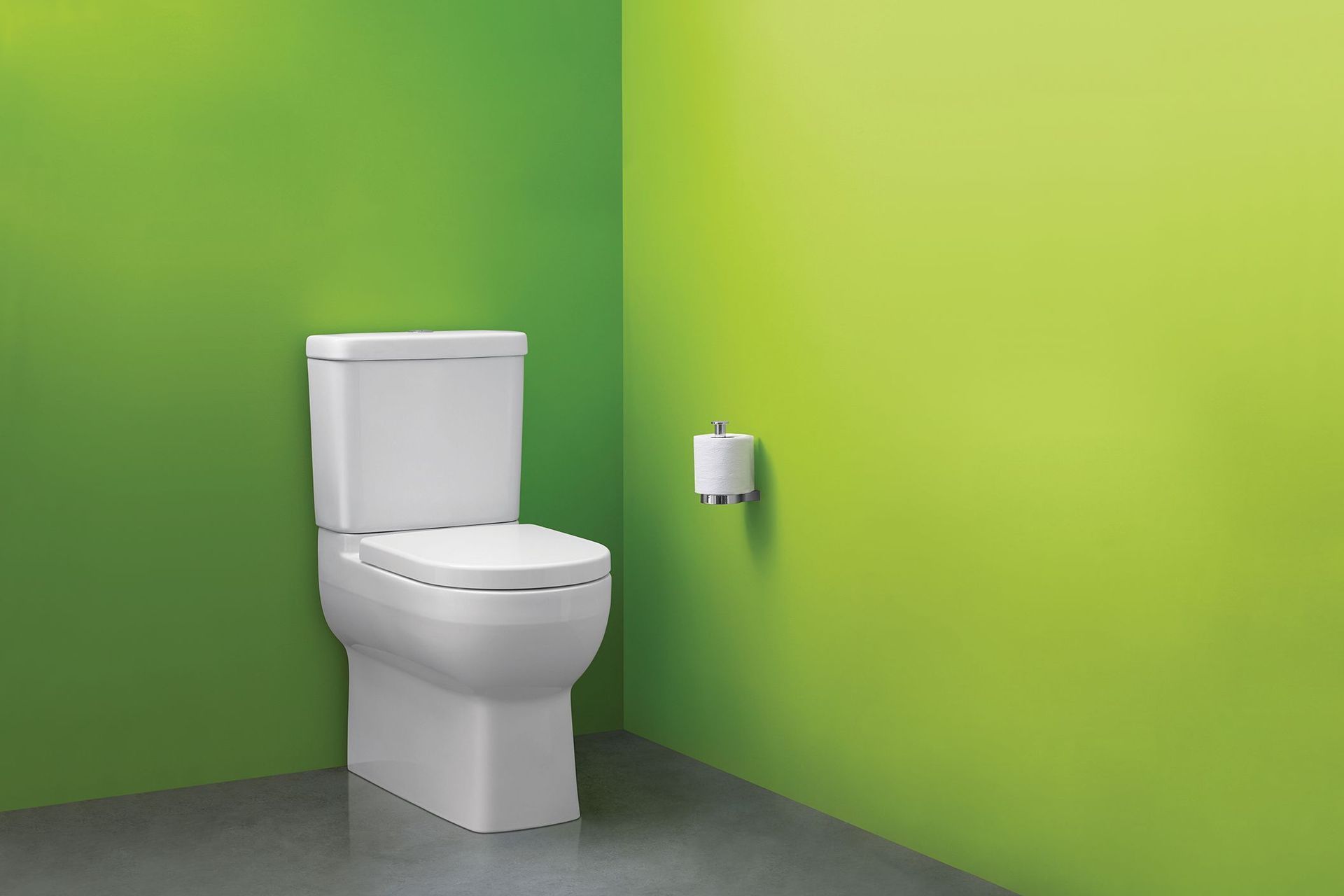
5. Rimless toilet
A rimless toilet is a modern design of the traditional toilet where the usual rim around the inside edge of the toilet bowl is eliminated. The key benefit of this design is its easy-to-clean nature and enhanced hygiene, since there are fewer hidden areas for dirt and bacteria to accumulate. They're commonly used in both residential and commercial bathrooms due to their modern design and hygienic advantages.
Pros:
Improved hygiene: Rimless toilets eliminate the hidden rim where bacteria and grime can accumulate, thus promoting better hygiene.
Easier cleaning: The absence of a rim means less hard-to-reach areas, making the toilet easier to clean.
Contemporary feel: Rimless toilets offer a sleek, modern design, which can enhance the overall look of a bathroom.
Cons:
Water splashing: Some users report that rimless toilets can cause more water to splash out of the bowl during flushing, which may require additional cleaning.
Price: Rimless toilets are typically more expensive than standard toilets, which can be a deterrent for budget-conscious consumers.
Limited models: As a relatively new design, the range of models available for rimless toilets might be limited compared to traditional toilets.
Related article: What is a rimless toilet? The pros and cons
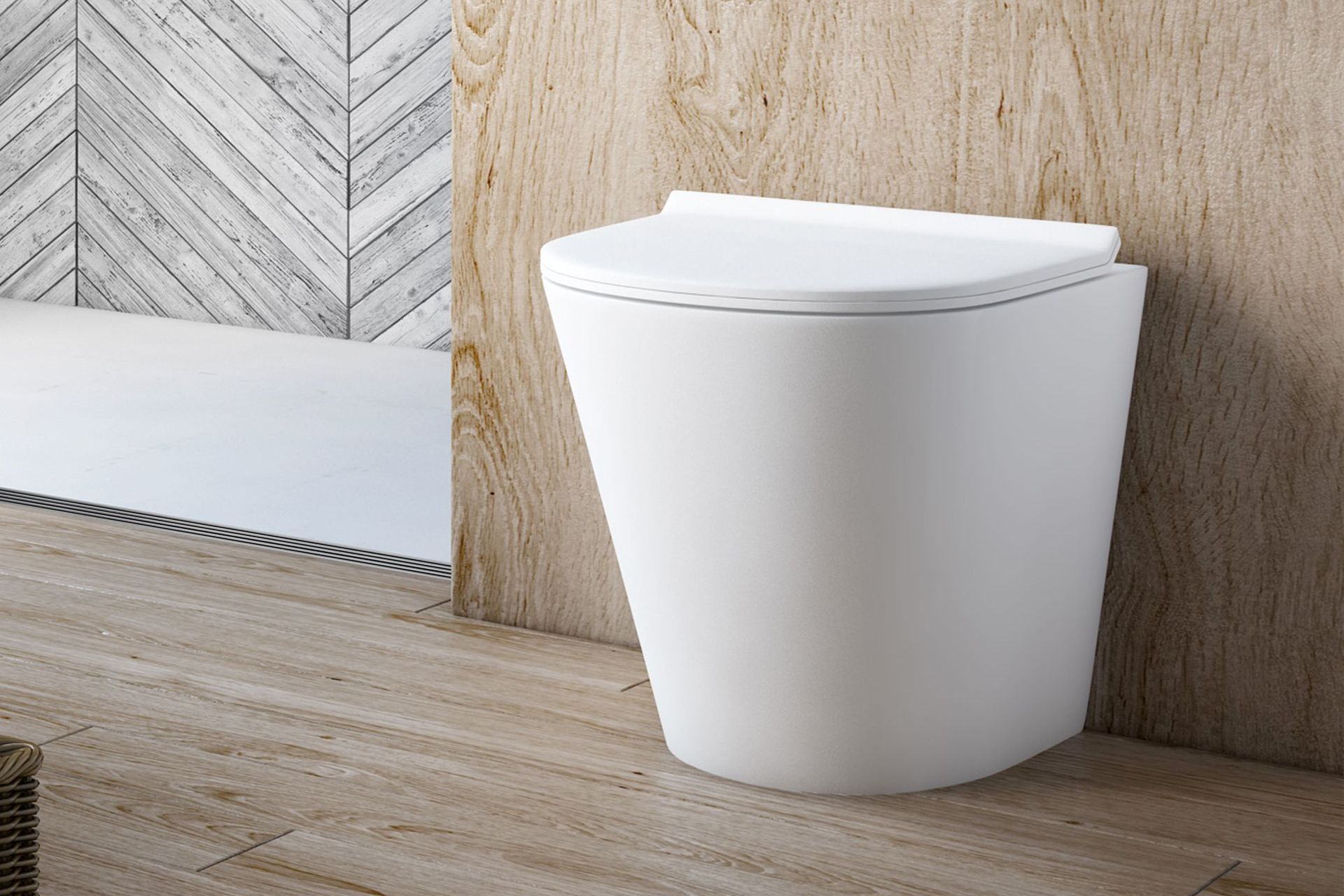
6. Smart toilet
Smart toilets incorporate a variety of technological innovations to deliver superior comfort and control to users. They go beyond the basic functions of traditional toilets, offering a plethora of features that can be easily managed through electronic controls. These may include amenities such as heated seats, automatic flush systems and bidet functions. The goal is to enhance the overall bathroom experience, making it more luxurious, convenient, and tailored to the individual.
Pros:
Enhanced comfort and hygiene: Smart toilets often come with built-in water jets for easy cleaning, heated seats for added comfort, and hands-free flushing for improved hygiene. Models like the pressure-assisted toilets can provide a more satisfying flush.
Water efficiency: Most smart toilets offer multiple flush options, allowing users to choose the appropriate amount of water for each flush. This not only promotes water conservation but can also lead to reduced water bills.
Cost savings: By using water more effectively, smart toilets can contribute to lower utility costs over time. This is a significant advantage, particularly in regions where water costs are high. The Veil Wall Intelligent model is an excellent example of a smart toilet with these benefits.
Cons:
Dependence on electricity: Smart toilets rely on electricity for their advanced features. This requirement can be a drawback in areas with unstable power supply or during power outages.
Complex installation: The need to wire these toilets to the mains or power them through batteries can make the installation process more complex and time-consuming than traditional toilets.
Increased overall energy costs: While smart toilets can help save water, their reliance on electricity can lead to increased energy costs, offsetting some of the savings made on water consumption.
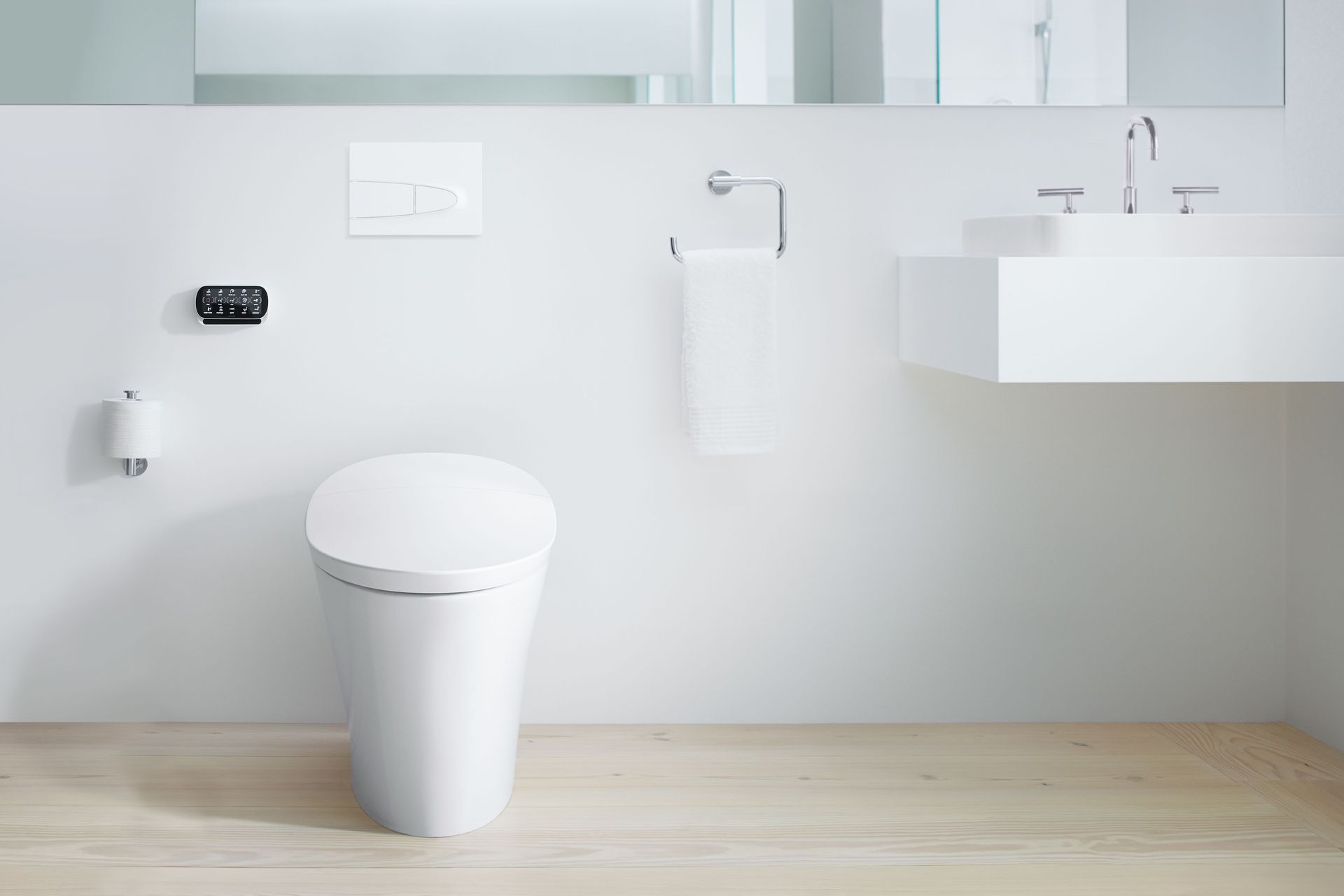
7. Composting toilet
A composting toilet is a type of toilet that transforms solid human waste into compost, a nutrient-rich soil enhancer. It operates by fostering an environment rich in oxygen, which encourages the growth of aerobic bacteria. These bacteria are key in breaking down the waste swiftly and effectively. The process within the composting toilet is optimised by carefully managing suitable moisture levels, ensuring a balanced carbon to nitrogen ratio, and controlling the correct temperature. These factors together ensure that the waste is efficiently decomposed into usable compost.
Pros:
Versatile applications: Composting toilets come in varying sizes, with smaller models suitable for caravans, boats, and small holiday homes, and larger, central or remote models that can be connected to a compost pile or septic tank, catering to various needs and settings.
Sustainable waste management: The major appeal of composting toilets lies in their ability to convert human waste into compost. This can be used to enrich non-edible garden soils on your property or elsewhere, contributing to environmentally friendly waste management.
Water conservation: As composting toilets are primarily tankless, they do not require water for operation. This feature makes them an excellent choice for promoting water conservation, especially in regions where water resources are scarce..
Cons:
Manual emptying: Smaller models of composting toilets require manual emptying of the waste, a task that might not be appealing or feasible for all users, contrasting with the automatic waste disposal of standard toilets.
Increased maintenance: Composting toilets generally demand more maintenance than other types of toilets, requiring regular attention to ensure they work correctly.
Potential odour and pest problems: If composting toilets are poorly maintained, they can produce unpleasant odours, which in turn may attract unwanted pests and insects, creating potential hy
8. Dual flush toilet
Dual-flush toilets provide two flush choices, one for liquid waste (half flush) and another for solid waste (full flush), promoting water conservation. This feature makes them highly efficient in terms of water usage. They are ideal for both residential and commercial settings, especially in areas where water conservation is a priority. It could be argued that a dual flush toilet is more of a ‘style’ of toilet, but it's important to be aware of dual flush toilets as they are often sold as a ‘dual flush toilet’.
Pros:
Water-efficient: They use significantly less water compared to standard models and single flush toilets.
Cost-saving: Lower water usage means lower water bills over time.
Environmental friendly: They contribute to water conservation efforts.
Cons:
Complexity: The dual-flush mechanism is more complex, which may lead to more frequent repairs.
Price: They are usually more expensive than traditional gravity-feed models.
Inefficient solid waste removal: The water-efficient flush may sometimes be insufficient for solid waste, requiring multiple flushes.
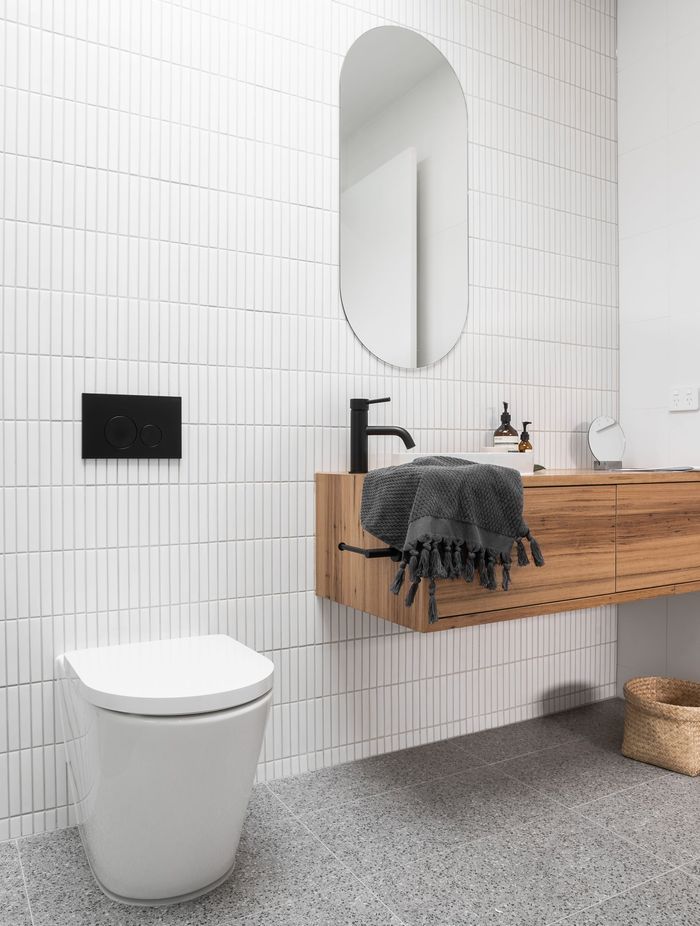
Important considerations when choosing the right type of toilet
Now you know some of the different types of toilet, it never hurts to have an idea of a few general points you need to consider when you’re trying to decide on the right type of toilet for your needs:
Think about whether you have a P trap or S trap setup: The orientation of your toilet trap – P trap or S trap – can influence the type of toilet you choose. Some toilets are specifically designed for one setup over the other.
Consider whether you need to work with a professional plumber: Depending on the complexity of the toilet model and the existing plumbing, professional installation may be necessary. It's crucial to factor in the cost and feasibility of professional installation when choosing a toilet.
Think about size, layout and style: Your bathroom's size, layout, existing toilet and style can also influence the type of new toilet and the toilet style that's best for you. For instance, smaller bathrooms may benefit from designs that save space like wall-mounted toilets, while larger or more luxurious bathrooms may accommodate more modern toilets such as elaborate smart models, or those toilets with a dual flush system.
Related article: 11 types of toilet seats: shapes, styles, materials and more
Picking the perfect toilet for your home
As you can see, there is a great range of toilet designs to choose from in Australia from state-of-the-art smart toilets to environmentally-friendly composting toilets. Whether you’re looking for a toilet for a new bathroom renovation or an upgrade for a campervan, you’ll be able to easily find a solution that best suits your needs.
Related article: Toilet dimensions: A sizing guide with FAQs
